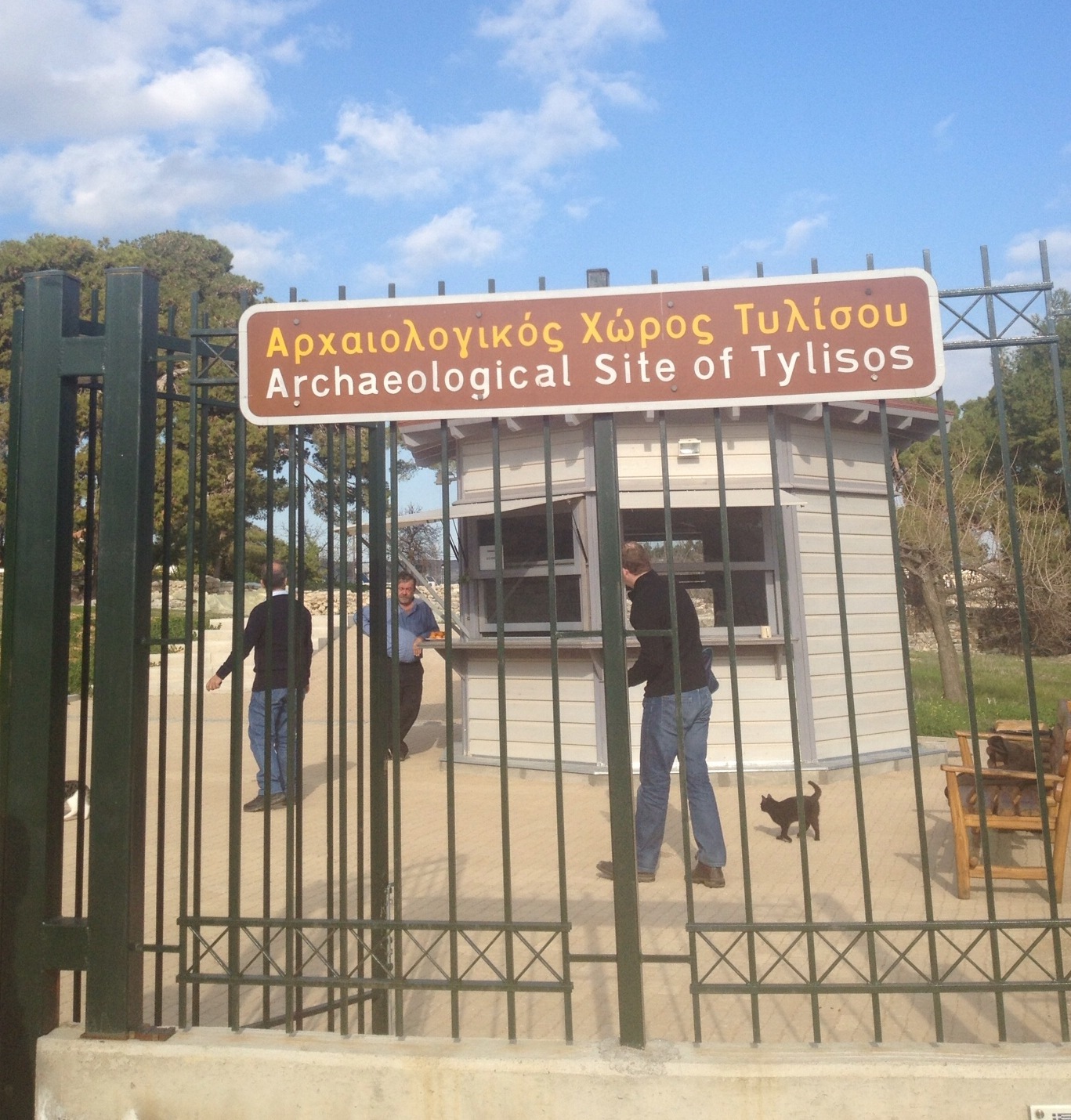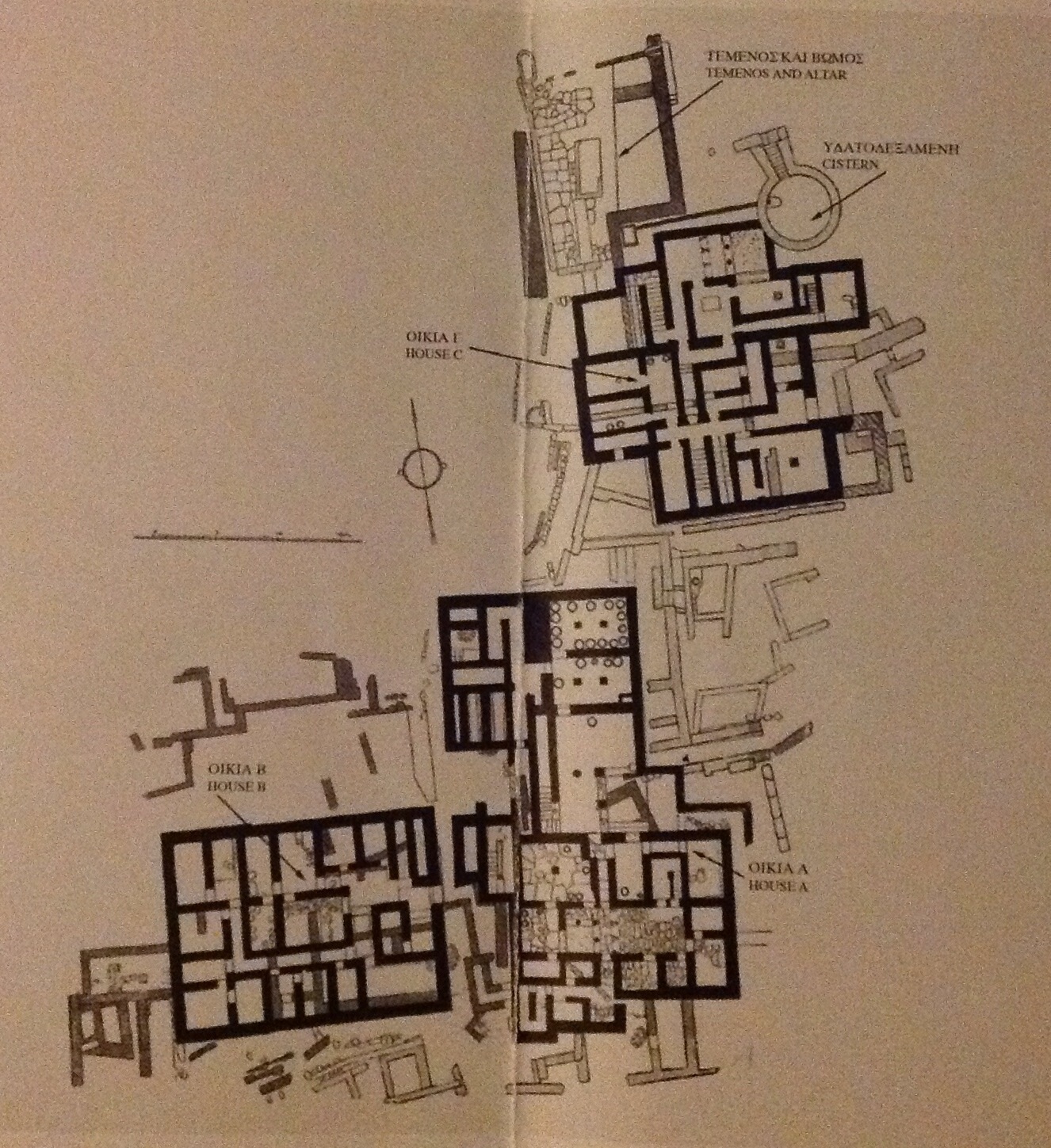Having gotten used to waking up to the smell of pies and feasting on goat cheese, chocolate, and spinach pies and mountain tea for the past few days, I was a little disoriented this morning waking up to the sounds of cars from the streets and eating a more “American-like” breakfast with sausages, bacons, and milk.
After a pretty relaxed morning, our first site was the Heraklion Archaeological Museum at the center of town with a large Minoan art collection. Stepping foot into the museum, I quickly noticed the difference between this museum and the others we have visited. Here, we were greeted a guard at the door to check our tickets and every room that was separated by the the different time periods also had a guard. The gray wall color and the blend of a white and gray colored floor matched with clear glass windows to protect the art provided us with a new experience in seeing the details of the paintings and the pottery. The lighting in each of these rooms were bright enough that small details could be noted and good photographs could be taken. We were also alongside many other tourists, which is definitely different than some of the other museums we had visited where we were the only people.
The Heraklion museum has collections ranging from the archaic to the Late Roman period, and most of the pieces of findings were from nearby sites including Knossos, Gortyn, and Ierapetra. In the first room, we entered we saw that the pieces that were found were included on a larger canvas and the missing parts were restored. This restoration process takes in what is known from what is found and completes the remainder of the paintings by interpreting the findings to provide a more complete picture of what they were depicting. This process can be problematic in the sense that as viewers we cannot “un-see” things, so we would only take into mind what is restored and not try to figure out from the pieces that were actually found.
One of the pieces we saw was the “Tripartite Shrine”, which is also known as the “Grandstand Fresco”. This scene is thought to depict a scene taking place at the Central Court of the palace of Knossos with open space in the front and spectators on the side. The building has the horns of consecration. The females conversing in the front are more detailed in their depiction and their higher class status is noted, and a large crowd of people are in the back and only their heads are visible. This painting gives people a general ideal of what kind of place Knossos was, but it should be noted that whether or not the setting is Knossos is still under debate by scholars.
This is the first time that we also saw art pieces with high relief composition. One to take note is the “Prince of Lilies”, which is very characteristic of Minoan Crete. The life-sized figure is composed of parts that are not joined together, so the majestic headdress is still under debate as in whether it’s for the man or for the bull who is part of this larger mural composition but not depicted here. Likewise, the identity of this man is still much under debate because Sir Arthur Evans who excavated Knossos argued that he was the ruler of Knossos or a priest king, while other scholars suggest that he is an athlete.
So is it a good idea to try to complete a piece provided that you only retrieve minimal information from the findings? This may not always be accurate as shown by Sir Arthur Evans. He made a copy of the pieces that he found at Knossos and using the pieces that he had recovered as shown on the left, he thought that the painting was of a boy placing flowers in a basket as a offering. After a piece of the muzzle of the monkey was identified, it was determined that the fresco was actually a portrait of a money picking up flowers and placing them in baskets that is offered to a goddess as a gift as shown on the right. Monkeys play an important role in Minoan culture and religions. If that extra piece had not been recovered, everyone would have assumed that it was a boy doing the offerings and not the monkeys. This revelation provides a more accurate and new view of the Minoan culture that would have otherwise been misunderstood. Therefore, the process of restoration, which is important and easier for viewers to see a more complete piece, is helpful but can sometimes be misleading.
We continue our tour of these museum and see a wonderful collection of terra cotta pots, dedalic figurines found in tombs and sanctuaries, and sculptures of Roman emperors. After more free time to explore the vibrant city, we are off to another tour of Heraklion with Marinella!







